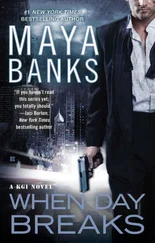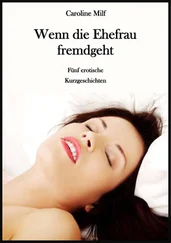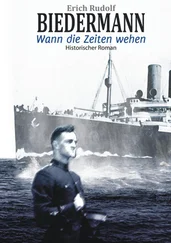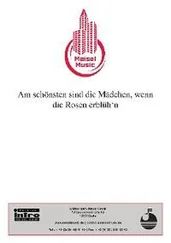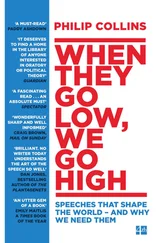From day two, even after major surgery like this, the medical staff insisted on mobility, effectively to stop fluid accumulating in my lungs. This, it was hoped, would lessen the risk of pneumonia.
Mobility means walking, and somehow or other they got me out of my bed, attached all my tubes and bottles and drains to a frame and sent me off on what I called the walk of death: a seemingly endless journey around the inner core of the building. Each step was a huge effort, a full walk round the block an eternity. At first I had to do it five times. Then ten. Then twenty.
I was not alone in this enterprise. Other patients who had had the same or similar operations were also walking, all looking more like apparitions than people, washed out, white-faced, haunted. No one spoke, no one even smiled. We just walked on, like ghosts.
But for all the misery of the walk of death, day by day things got better. One by one, the drains and tubes were removed, and within a week I was walking normally and unaided, an incredible testament to the human body’s powers of recovery.
Gail visited me twice a day for long periods, even though she was working flat out. She did not like the hospital, finding it harsh and unyielding. In a way she was right, but this brutality was also the hospital’s strength. It was a cancer terminator, unwavering in its determination to cure the disease. It was New York and it was a tough place.
Each time Gail tried to get me moved from my shared room to one of the few single rooms on the floor she failed, always pre-empted by someone else. Then a nurse gave me the secret of success: the only way I could secure a room, she said, was to take all my possessions and just squat in one, which I did.
That is what it is like in a New York City hospital. But the longer I was there the more I liked it.
For a start I could talk rather than mumble through tubes and dryness. I got to know the nurses well, and they were exemplary – the nurses on my floor had been voted the best nursing staff in the north-east of the United States. The average time most of them had spent on this ward was more than ten years, and they were caring and efficient. They did not wear uniforms but jeans and T-shirts, and they were confident in their role.
The doctors, too, were excellent, many of them coming from all over the world as fellows for short periods to experience life at a major cancer hospital. They were sharp, bright and intellectually curious. I spent hours talking to them. I could not say I liked Memorial Sloan-Kettering, but I admired it.
About five days after my surgery, Murray bounded into my room with an enthusiasm that belied his previous coolness. ‘We have your histology results and they are excellent,’ he said. There were no cancer cells in any of the lymph nodes – I could start planning a second career.
He would not stop talking, saying his previous taciturnity reflected his fear that at least one of the nodes was contaminated with cancer, which would have significantly affected my life chances. Now he was all optimism: I had a 75 per cent chance of five-year survival.
I felt hope, and a softly growing excitement, the same sense I have felt on so many occasions – and in so many elections – that despite everything I had won through.
Two days later, as so often with cancer, a step forward was followed by a step back. The surgery wound was looking red and sore and Murray said it was infected. His response to this was not to use antibiotics, which he disapproved of because they encouraged MRSA, but to open the wound and let it heal naturally. He was confident that it would be healed in two or three weeks.
The infection introduced me to a process known as packing, not my favourite moment on the cancer journey. Packing involved pushing gauze into the open wound with a kind of wooden spatula. The gauze was then pushed down to the very bottom of the wound, and more gauze was packed in until the wound was completely filled. Although not painful, this was uncomfortable.
Almost worse was the pre-packing cleansing in which I had to wash the open wound in a shower, not just externally but internally. I will not forget looking down at this vast, gaping, blood-red wound that seemed to go so deep into my body that I could not see its end, and then trying to flood it with water.
This process was to be repeated twice a day, for more than two months.
The day before I left hospital I needed to get my wound checked by one of the younger doctors. The only place they could do this was the outpatients department, effectively the hospital’s A&E. This seemed to be the main point of contact with the hospital for those with fewer resources, possibly getting their treatment for free. It was a demanding place to be, functional at best, with little hint of comfort of any sort. Many of those in the waiting area were African American and many were showing signs of distress. One couple in particular stood out. He was in late middle age and had a feeding tube directly into his throat. He was in some pain and gasping for breath, making a harsh rasping sound that echoed round the room. His wife held him partly through love, partly through panic. I smiled at her but she looked at me blankly, no sign of a response.
After a while the doctor called him in and she was left alone, and she immediately responded with a huge smile. She said that these few moments alone gave her some relief, that when she was with him she simply could not relax. And she was with him, she said, almost all the time, day after day, night after night.
I began to understand what cancer meant for those without resources, without help, without insurance, without any kind of reliable medical support. These two were lucky, they were being treated, and in an outstanding institution. But what about those who were beyond the reach of such care, not just in the United States but elsewhere? Cancer is tough at any time; in poverty, without proper treatment and support, it must be hell on earth.
The next day I left the hospital, and walked into the warm mid-May sunshine. There was blossom on the trees, and it was impossible not to feel a moment of happiness – I had got through it and I had won.
We returned to the hotel and I attempted to get back to normal. But normality was not so easy to find. I went out to dinner and ate some chicken, which got stuck in my throat. I struggled home, with acute pain and occasional vomiting. It took two hours to clear the chicken from my throat. This happened time and time again. And if it was difficult for me, it was far worse for Gail.
Meanwhile the wound packing, done by two nurses from the hospital, continued twice a day. Each day followed its own routine. A walk to the park, a few futile attempts at eating, the evening spent watching the politics shows, which all focused on the US primary elections.
Of course I loved the constant, obsessive attention to the elections night after night. I favoured Hillary Clinton for political and personal reasons; working on her husband’s 1992 campaign had been formative for me on almost every level. But I was confident Obama would win, it was his moment.
There was the occasional break in routine. Ed Victor, my literary agent and a good friend, visited and we watched on television the Champions League final between Chelsea and Manchester United in Moscow. But mainly it was politics and packing.
So my time in New York passed.
I flew back to London on 30 May. I was determined to move lock, stock and barrel into the Marsden, arranging to see Professor David Cunningham, head of the gastro-intestinal unit.
Before my appointment I saw my private oncologist, Maurice Slevin. He disagreed completely with Murray Brennan’s prognosis. He said that the margins were small, and that his analysis showed a less than 40 per cent chance of five-year survival, not the 75 per cent suggested by Murray. He recommended radiation, flatly contradicting the advice I had received in New York.
Читать дальше

